A look at The Aspire Plan, the Strategic Plan for Tower Hamlets Council. A Developers Charter. With no full Equality Impact Assessment carried out. Increasing inequality and social cleansing in the East End.
Once upon a time at Tower Hamlets Council, The Aspire Plan
“I am pleased to introduce the Council Strategic Plan for the next four years. Following my decisive election victory in May the people of Tower Hamlets have put their faith in me to deliver change.”
Tower Hamlets Council Strategic Plan 2022-2026 – Mayor Lutfur Rahman
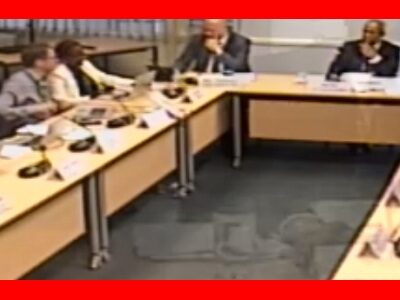
On the 1st of August 2022, Mayor Lutfur and his Aspire cabinet announced his four-year plan for Tower Hamlets. ‘The Aspire Plan’ for Tower Hamlets was contained in the strategic plan, presented in a cabinet meeting that day.
Mirroring the practice in Whitehall, the strategic plan is a document produced by council officers translating the winning political party’s manifesto into policies and implementation plans. In Tower Hamlets’ case, the Aspire Party manifesto was converted into a four-year plan for Tower Hamlets Council.
A close look at the plan, this theatre of socialism and equality, leaves more questions than it answers. A primary analysis of The Aspire Plan shows serious equalities considerations have not been taken into account. In fact, the plan adversely affects the diverse demographics that make up the modern East End.
Far from the rallying cry of Socialism that Mayor Lutfur spoke about in his Jacobin article. Instead of, in Mayor Lutfur’s words, “reducing the institutional power of developers, big landowners, and big business,” the plan increases their powers.
So what did I find?
The Good, the Bad and the Ugly Inequalities?
“Every Gun Makes Its Own Tune.”
The Good, The Bad and The Ugly – Sergio Leone
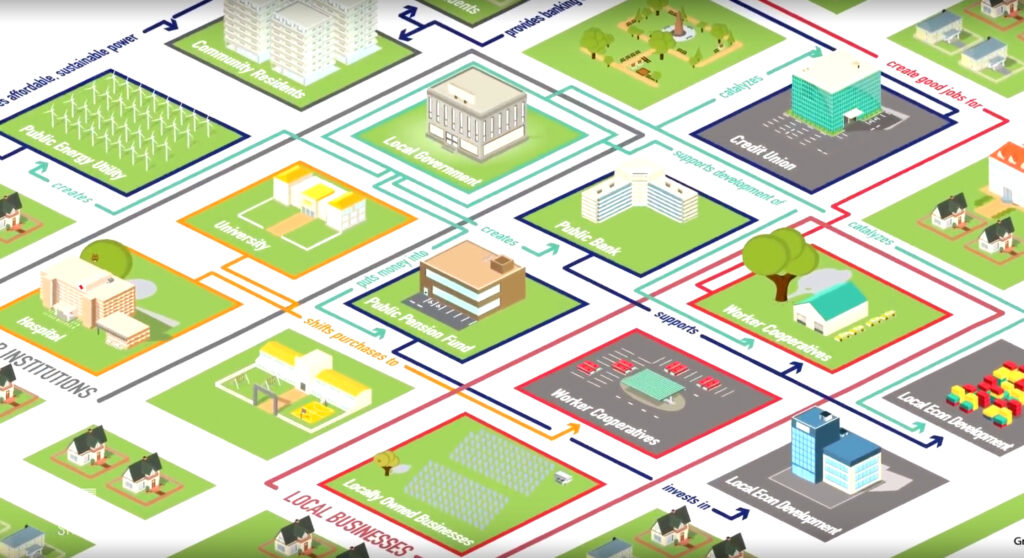
At first, the Aspire strategic plan has all the tick box features of Municipal Socialism. For example, buzzwords such as community wealth building, community land trust, in sourcing etc. A closer look at the Strategic Plan, instead of a wide-ranging community wealth building program, like in Preston or Salford. Looking at the size and scale, we have Community Wealth Building reduced to a single building for businesses.
“4.15 Appoint a dedicated council officer responsible for Community Wealth Building, and for the development of a Community Land Trust in LBTH to create permanently affordable workspaces.”
Tower Hamlets Council Strategic Plan: annual delivery plan 2022/23
But the issue is not what is in the plan, and the size of the scales, but what is missing from the strategic plan. A word search of the Aspire Plan has no mention of social cleansing and gentrification. In fact, according to the Aspire plan, the entire delivery of the four thousand social housing units in the plan will be delivered by the same institutional power of developers, big landlords and big business.
No mention of checks on the power of unfettered capital, just temporary plasters to ease their destructive consequences. No mention of Neighbourhood Plans or planning forums, or hardwiring Equalities consideration in the planning department.
It seems what we have here, with all the contradictions in the Aspire strategic plan, is a Mexican Stand-off. In popular culture, the term Mexican stand-off is sometimes used in reference to confrontations in which neither opponent appears to have a measurable advantage. The classic exemplar of the trope is in Sergio Leone’s 1966 Western The Good, the Bad and the Ugly, where the eponymous characters, played by Clint Eastwood, Lee Van Cleef and Eli Wallach, face each other at gunpoint.
However, in this stand-off, the winners will be developers and the losers the ordinary people, in particular, the working class communities of Tower Hamlets. The sole reliance on economic regeneration by land speculators drives a horse and carriage through the entire redistributive policy program in the plan. Increasing inequalities and the displacement of working-class communities from the area.
Green light for speculative property developers to rip through the Borough.

“You See In This World There’s Two Kinds Of People, My Friend – Those With Loaded Guns, And Those Who Dig. You Dig.”
The Good, The Bad and The Ugly – Sergio Leone
The Aspire Plan: A Developer’s Charter?
“It’s all about bucks, kid. The rest is conversation.”
Gordon Gecko – ‘Wall Street’

As a former Labour Councillor, I am familiar with the consequences of a developer-led strategy in regard to social and economic regeneration. A subject I highlighted in the campaigns on Liveable Streets and #SAVEBRICKLANE.
Developers along with their financiers have to maximise profits, in order to maximise profits they have to maximise land values. The only way to maximise land values in an inner city London Borough is to displace the existing working-class communities and replace them with properties that attract more affluent demographics.
Looking at the first tenure of Mayor Lutfur (2010 – 2015) we see a speeding up of the rate of displacement of working-class communities from the East End. The rate of gentrification increased due to policies implemented by him in pursuit of social housing units delivered by property developers.
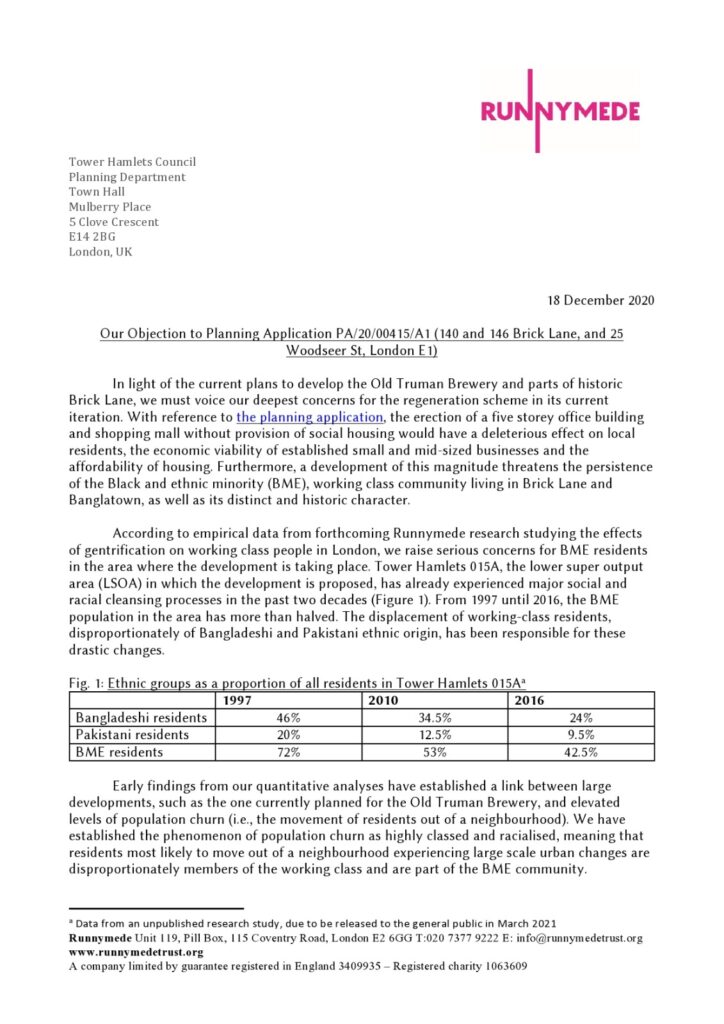
In that first tenure, we have the sweetheart deal with Telford Homes, where the private developer got public land for free, only paying for the land when they sold a unit after completion. To the proliferation of Tesco Express and other mainstream retailers in the borough. A policy which has led to an adverse impact on independent retailers in the borough, who could not compete with economy of scale or subsidies that mainstream retailers use to push them out of business.
When I worked in commercial property (2007 -2015), Tower Hamlets was the but of jokes in the corporate property offices dotted around Mayfair. It was called the ‘wild east’, for how easy it was to do business there and make a quick buck. For example, one developer boasted to me how he doubled the units in his site on Cephas Street, without permission, under the Council’s nose without any enforcement. Alas, no social housing units are provided, just flats for rich professionals.
The other example is the property team at Tesco, called Tower Hamlets, Tesco Town. Boasting the largest concentration of Tesco Expresses. I was informed unlike Conservative-led Westminster Council, where they faced a hostile planning authority, Tower Hamlets Council at that time operated an ‘open door’ policy. The consequences are the devastation of independent retailers on local high streets.
Tesco’s strategy mirrored that of Walmart in the United States. Where they calculated the population density they needed to sustain a store, with the objective of pushing independent retailers out of business. Replacing independent retail jobs, relatively good paying, with less zero hour contract paying jobs. A net loss to the local circular economy.
A process of creative destruction. Increasing inequalities in Tower Hamlets while increasing profits for shareholders. Signifying a net transfer of wealth out of the local economy. Something which I witnessed first hand as a Councillor in Mile End.
Creative Destruction: The case study of developer-led regeneration in Mile End

“Situations emerge in the process of creative destruction in which many firms may have to perish that nevertheless would be able to live on vigorously and usefully if they could weather a particular storm.”
Joseph Schumpeter 1883-1950
As a Labour councillor in Mile End (2018 – 2022), I saw the consequences of removing checks and balances on developers, in the name of meeting housing targets. First, I had to deal with the consequences of Telford Homes building luxury flats in the middle of social housing estates, without any social infrastructure. Telford Homes, after pocketing profits of their sales, left in their wake divided communities and rampant ASB.
Then you have the opening of the Tesco Express on Burdett Road. They are reducing the turnover of independent retailers on the same stretch of the road, with some going out of business and the rest struggling to make ends meet.
Perhaps it was all worth it with all the added social housing. Let’s have a look.
On Thomas Road, I saw the quality of the social housing provided by a developer-led regeneration. With an emphasis on numbers, the quality was overlooked. In one instance, there was a social housing unit with inadequate ventilation. Consequently, in the summer months, the tenants were on the verge of passing out due to heat and suffocation.
The other issue I found was that of sustainability. For, example, in the rush to provide units, no thought was given to the maintenance of these new social housing units. Again on Thomas Road, when I was campaigning to be a councillor in 2018, I came across a leak in the corridors of a cluster of social housing units. As a councillor, I enquired, why this leak has not been fixed. The reply I got, was the social housing provider prevented from fixing the leak, as the ownership of the corridor was in dispute with the developer and owner of the site. When I campaigned in 2022, at the end of my tenure as a councillor, the leak was still there.
Finally, you have the controversial Chrisp Street regeneration by Poplar HARCA, which I objected to as Councillor, initially green-lighted by Mayor Lutfur. A scheme by a social housing provider which provided less social housing as a percentage, while pocketing the underlying value of the site. Value in a piece of land they acquired from Tower Hamlets Council for a nominal amount.
Is rising inequality such a bad thing if the outcome is a nominal increase in social housing?
Inequality Does Matter: The case study of Mass Incarceration in The Aspire Plan, ‘A Dealer a Day.’
“Imprisonment is increasingly used as a strategy of deflection of the underlying social problems—racism, poverty, unemployment, lack of education, and so on.”
Angela Davis

In 2009, Richard Wilkinson and Kate Pickett published the book, ‘The Spirit Level: Why More Equal Societies Almost Always Do Better’. The book argues the “pernicious effects that inequality has on societies: eroding trust, increasing anxiety and illness, (and) encouraging excessive consumption” It claims that for each of eleven different health and social problems: physical health, mental health, drug abuse, education, imprisonment, obesity, social mobility, trust and community life, violence, teenage pregnancies, and child well-being, outcomes are significantly worse in more unequal countries, whether rich or poor.
One of the outcomes of increased inequality is the securitisation of working-class communities. Authorities instead of dealing with underlying issues of crime, such as poverty and lack of opportunities, resort to incarceration. A policy and its consequences highlighted by the Institute of Race Relation Paper, ‘The London Clearances’. The Aspire Plan reinforces that approach with mass incarceration.
“6.2 Work with the police and other bodies to tackle drug-related crime. Support the police to arrest at least one drug dealer every day. This work will be supported by drug rehabilitation services to stop these problems from recurring.”
Tower Hamlets Council Strategic Plan: annual delivery plan 2022/23
The dealer a day pledge, to reduce drug-related crimes and anti-social behaviour, targets mass incarceration on left behind demographics who mainly sell the drugs while leaving alone the more well-to-do consumers. The policy reinforces racist stereotypes that drug use and trafficking are concentrated in left-behind demographics. This is despite extensive research from the United States, the Substance Abuse and Mental Health Services Administration confirming that there are no clear patterns in illicit drug use among different races, ethnicities, employment groups, or levels of education.
One distinction that does stand out is wealth. A 2012 study published in the Journal of Studies on Alcohol and Drugs shows that young adults who come from higher-income backgrounds are more likely to use alcohol or marijuana. So The Aspire Plan target poorer demographics while leaving the consumers of drugs from richer demographics to carry on with their habits. Sounds fair?
Makes one wonder, why are these issues not being picked up. Surely, like all other major decisions, an Equality Impact Assessment would have been carried out?
It’s the Equalities Stupid
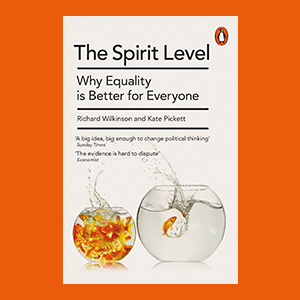
“We want to do more than just provide ‘escape routes’ out of poverty for a talented few. We want to tackle the class divide.”
Harriet Harman, 2009, speaking on the proposed Single Equalities Act
Looking at the papers published by Mayor Lutfur, accompanying the Aspire Plan, there is no Equalities Impact Assessment. An Equalities Impact Assessment, is a statutory requirement of local authorities, to give due regard to their Public Sector Equalities Duty.
“The Strategic Plan has been subject to an Equality Analysis initial screening. The screening exercise has indicated that a full Equality Analysis is not required, as the Strategic Plan is focused on tackling inequality.”
Strategic Plan 2022 – 2026 Adoption
In plain English, all public bodies have to assess whether their policies discriminate against residents that are protected under Equalities Law. Ranging from class, race, disability, and sexual orientation to faith. This is done through an Equality Impact Assessment. An audit on a proposed decision. If a decision does discriminate against vulnerable demographics, then the public authority has to propose mitigations to protect those groups.
For example, an Equality Impact Assessment would have flagged up issues with the dealer a day, mass incarceration program in The Aspire Plan. This would have forced decision makers to come up with mitigations so as not to adversely impact racial minorities. Mitigation such as treating young offenders, arrested on drug dealing charges, as victims of child exploitation and modern slavery.
A full Equality Analysis would have shown that what we are witnessing in Tower Hamlets is not a drug epidemic, but a modern slavery one. Many low-level dealers, come from young and vulnerable demographics, a vulnerability that is exploited by gang masters into coercing them into drug dealing. Focusing on street dealers exacerbates the issue of exploitation. When arrested, street dealers are forced to take on the debt of the drugs seized by police. Instead, authorities should target those who are running the gangs and drug lines. For example, Slavery and Trafficking Risk Orders can be applied for, civil orders which target the organised criminals at the top, while protecting their victims, who are in many cases coerced to be street dealers.
The above example shows the benefits of not relying on superficial thinking in regard to policies and their impacts. It also highlights the importance of audit tools such as an Equality Impact Assessment and why they are essential.
The fact that a full Equality Impact Assessment has not been carried out, perhaps indicates, that the authors of The Aspire Plan know about the negative impact it has on left behind, protected demographics. Perhaps they know it’s business as usual, with working-class demographics being displaced out of the East End?
Reversing or Increasing Social Cleansing?
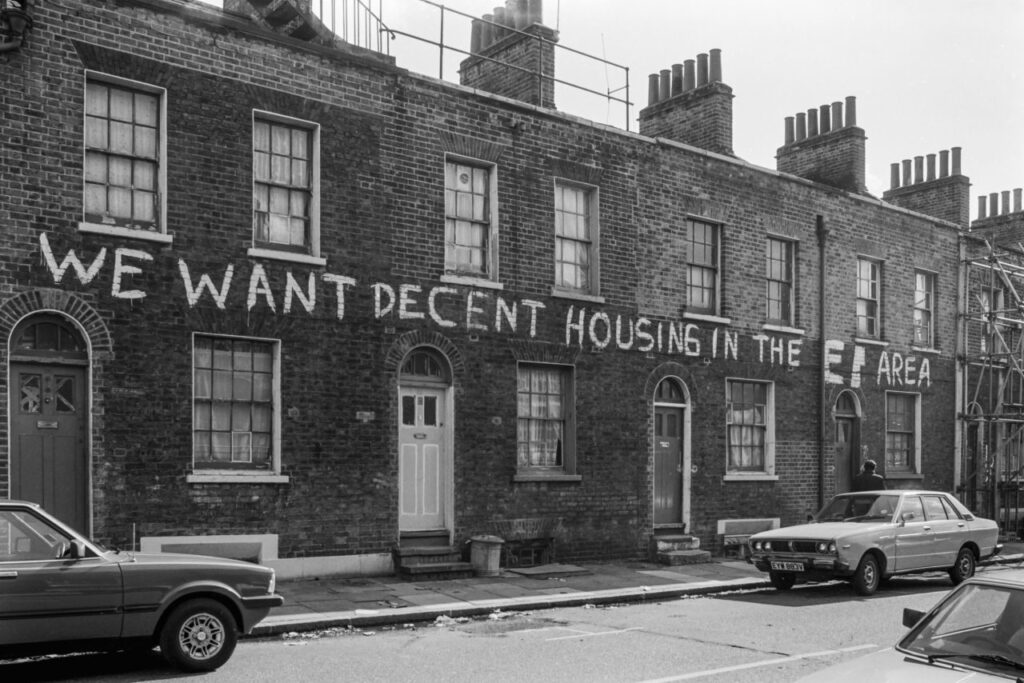
“One phrase crops up to describe this: “managed decline.” One former councillor told me: “The idea seemed to be that nobody can afford to live here now anyway, so these communities are doomed to die. It was like the main aspiration was for residents in Tower Hamlets to move to Essex.” It should be a lesson: if you turn against your supporters, they may eventually turn against you.”
Hettie O’Brien – Not just the ‘red wall’ – How Labour took voters for granted in the heart of east London – Guardian 20/07/2022
In a recent op-ed in the Guardian, journalist Hettie O’Brien put down one of the reasons for Labour’s defeat to Aspire, which was the indifference to rising inequalities in Tower Hamlets. The Labour administration simply ignored residents’ concerns about social cleansing and gentrification.
The absence of an Equality Impact Assessment shows that The Aspire Plan and its authors are following the same road as the previous Labour administration. It ignores concerns around social cleansing. In fact, it offers more of the same but on steroids.
Yes, social cleansing and inequalities will rise faster under The Aspire Plan. Let me explain.
The previous Mayor Lufur and Mayor Biggs administration benefited from rising land and property prices, allowing them to get more in terms of social housing through Financial Viability Assessments (FVA). An FVA is a tool that is used to ensure planning policies are realistic, and their cumulative cost does not undermine the deliverability of the plan. The FVA takes into account a variety of factors, including the reasonable expectations of landowners and developers. Basically, FVA is the main tool, used to determine how many social housing units a developer can build on a site, while still making a profit.
With falling land prices and rising borrowing costs, the number of social housing a developer can offer falls. Either the administration takes a fall in the number of social housing offered or allows over-development. An over-development leads to a strain on existing infrastructure, rising inequalities and all the associated problems.
The fact was touched upon by the Overview and Scrutiny Committee at Tower Hamlets Council when they questioned the delivery of the 4,000 social shouting units to be delivered by developers. In reply, the Chief Executive at Tower Hamlets Council, gave an evasive reply, stating that it all depends on the FVAs.
Therefore, given the upcoming economic recession, Mayor Lutfur and his Aspire administration are not in the driving seat, but the developers are. With a target already set in The Aspire Plan, developers can argue successfully that either they are given lower social housing targets or allowed to build more on the same site. Leaving Tower Hamlets Council, like a latter-day Oliver Twist, begging for more.
Governing beyond signifiers: Moving beyond the sound bite and onto policies

“This is a plan which will harness the strength of our great community and deliver on the promises I made to
Tower Hamlets Council Strategic Plan 2022-2026 – Mayor Lutfur Rahman
residents to deliver a brighter future for our borough.”
One of the outcomes of living in the fast 24-hour, social media-led news cycle, is the equation of signifiers, identity tick boxes & sound bites with actual policies. Demonstrated by the fawning of social media warriors of the Aspire administration. The very same people who were uber critical of the previous Labour administration. This fake governing strategy so beloved by affluent left-liberals and champagne socialists has its brutal costs overall.
Rather than pointing the finger at Mayor Lutfur and The Aspire Plan, who, on the face of it, won’t or are incapable of governing in the interest of working-class communities. They will argue the situation is out of the control of any human being (Covid! Russia! Tory Government! The Establishment!), or that ‘Bad People’ on the Right are the problem.
If Mayor Lutfur and Aspire are serious about governing Tower Hamlets within the rule of law, then they should commission and publish an independent full Equality Impact Assessment. Due to the political conflicts of interest, the audit has to be done by those outside the bubble of the Town Hall.
Due to the significant impact of The Aspire Plan, the Equality Impact Assessment has to be accompanied by a collation and publishing of data. Proper due regard should be, as Lord Ouseley stated during the debate on the Equalities Act, means the collation and publishing of data. This access to data allows proper monitoring and recording of Equalities outcomes. Over a decade after the passing of the Equalities Act, it speaks volumes that such practice has not been embedded at Tower Hamlets Council.
“What we have now are volumes of equality strategies, schemes and policies, but not a great many desired and required outcomes that add up to recorded equality results. Yes, there are statements of intent, declarations, aspirations, commitments, warm words, policy reviews and mountains of reports, all in order to satisfy the requirement to have ‘due regard’ … but that standard of due regard is, in my view, woefully inadequate.”
Ouseley H. Speech in House of Lords, 2 March, proposing an amendment to Clause 148 of the Equality Bill. Hansard. 2010.
Until the above is done, then it appears the charge will stick. That Mayor Lufur and Aspire are beholden to the institutional power of landlords, developers and big business. Saying one thing in public and doing something else in private. A familiar story in the political tragedy, dressed up as the institutional politics of the East End. With a beginning and an end, with a lot of, what Friedrich Engels called, social deaths in the middle. Not to mention the few private bank accounts that get topped up as a consequence.
Part of a wider tragedy that has beset our modern-day politics. The political dynamic of refusing to judge public office holders based on whether they are actually doing their job. This creates a severe political problem for democracy itself. As voters lose faith that politics is anything but a game for social media audiences and business elites. It does not have to be that way, and voters will eventually either elect people who govern to constrain the powerful, or they will tire and become apathetic. We have seen this play before, and those are the two ways it usually ends.
But the East End is a different kettle of fish, there is only one ending to this play. As history has shown in the recent past, when a political institution is perceived to betray its voters, they eventually catch on. And eventually, boot them out. The working class communities can’t afford to wait and need good governance as of yesterday. Unlike, the more affluent, left-leaning politicos who are merely satisfied with the politics of identity signifiers. Who are happy to wait…
ESTRAGON: (giving up again). Nothing to be done.
Samuel Beckett – Waiting for Godot

“The class which at present holds social and political control… places hundreds of proletarians in such a position that they inevitably meet a too early and an unnatural death… its deed is murder”
Friedrich Engels – The Condition of the Working-Class in England.


Recent Comments